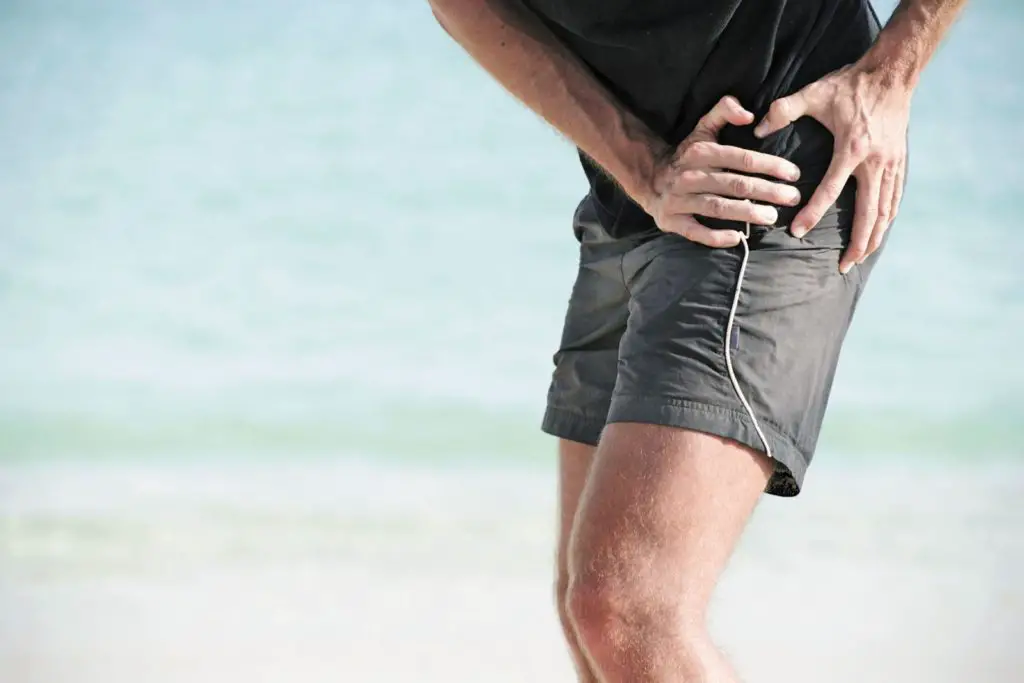Article reviewed and approved by Dr. Ibtissama Boukas, physician specializing in family medicine
THEhip osteonecrosis is the most common form of ostenecrosis. It is found in young subjects. It causes symptoms that quickly become disabling in the patient. We see that it is a pathology that affects more men than women. It can be unilateral or bilateral.
To find out if your groin pain is osteonecrosis of the hip or not, you've come to the right place. This popular article will inform you about everything you need to know about this disease. It reminds you of the anatomy of the hip, lists the many causes and risk factors for osteonecrosis of the hip. You will also find the symptoms, how to make the diagnosis and then how to treat this disease.
Definition and anatomy
Definition
THEhip osteonecrosis is defined by the premature death of bone tissue in one of the bones making up the hip joint. This premature death occurs following a defect in the blood supply to the bone. It then follows a lack of oxygenation of the bone then a lack of regeneration and therefore its destruction. The portion of the hip joint usually affected is the femoral head. We are therefore talking aboutosteonecrosis of the femoral head.
hip anatomy
The hip is the joint that connects the trunk to each lower limb through the union of the pelvis and the thigh. This is the coxo-femoral joint (coxal bone for the pelvic bone and femur for the thigh bone). It is a joint that plays a very important role in the statics and dynamics of the body. It must be stable while carrying the load of the trunk when walking and when standing.
There are two hip joints (left and right). The hip joint is made up of many anatomical elements. First of all there are the two articular surfaces of the ends of the two hip bones (coxal bone and femur).
- The acetabulum or acetabulum: it is the hemispherical cavity of the external face of the coxal bone. It articulates with the head of the femur.
- The head of the femur: It has a spherical shape and fits perfectly with the acetabulum.
Then there are the other parts of the femur which are:
- The femoral neck: it is located between the femoral head and the greater trochanter.
- The greater trochanter: It is a voluminous bony projection in the extension of the body of the femur called diaphysis.
- The lesser trochanter: is a small conical shaped bony prominence below and posterior to the femoral neck.
The different anatomical structures that maintain the stability of the hip joint are:
- The bead
- The joint capsule
- The ligaments (ilio-femoral Bertin, pubo-femoral, ischio-femoral)
- Muscles (abductors, adductors, internal rotators, external rotators, hip flexors, hip extensors).
The hip is capable of performing movements in all three planes of space.
In addition, this joint also has nerves. The two main nerves of the hip are the nerve sciatica posteriorly and the femoral nerve anteriorly.
Causes of Osteonecrosis of the Hip
Traumatic causes
- Complex fractures of the hip bones (with several fracture lines and displacements of the bone fragments): this type of fracture frequently occurs in the elderly.
- hip dislocation : It corresponds to the total displacement of the femoral head in relation to the acetabulum causing a rupture in the continuity of the articular surface.
In both cases mentioned above, there may be compression or damage to the blood vessels that feed the two ends of the hip bones. Hence the osteonecrosis of the hip by destruction of the bone tissue which dies.
Non-traumatic causes
Non-traumatic causes of osteonecrosis of the femoral head are conditions that cause the small blood vessels that supply the bony ends of the hip to stop circulating.
- Excessive chronic alcohol consumption
- Smoking
- Obesity and hyperlipidemia
- Long-term use of corticosteroids
- Chemotherapy
- Radiation therapy
- Chronic renal failure
- bleeding disorders
- Cushing's Syndrome
- Gaucher disease
- HIV-AIDS
- Lupus and other autoimmune connective tissue diseases
- Sickle cell disease: Osteonecosis of the femoral head is very common in sickle cell patients.
- Tumors
- Decompression sickness (divers rising to the surface too quickly)
- Idiopathic (without any concrete cause in around 20% of cases).
Symptoms of the disease
The main symptom of osteonecrosis of the hip is pain. As the bones are weakened by the lack of blood, microfractures occur. These fractures concern more the femoral head because it is it which supports the weight of the body. The pain therefore comes from these lesions and is localized in the groin, buttock or thigh. It can be a pain sudden onset, spontaneous or progressive, appearing during movement and decreasing at rest.
It then follows the second symptom which is the lameness or discomfort during activities of daily living.
Diagnostic
The doctor makes the diagnostic hypothesis of osteonecrosis of the hip in the face of mechanical pain in the hip. A careful history may reveal risk factors such as excessive and chronic consumption of alcohol and tobacco, or a particular medical history.
On physical examination, the doctor may have limited range of motion of the affected hip joint compared to the healthy hip. He can also find an inequality between the two lower limbs.
The diagnosis of osteonecrosis of the hip will be confirmed by standard X-ray if the pathology is already advanced. The radiograph will in this case show a deformation of the head of the femur (which is no longer spherical in shape) and is crushed.
Magnetic Resonance Imaging (MRI) will be performed if the x-ray was inconclusive. It can highlight a possible collapse of the bone or a hip osteoarthritis. Imaging examinations must always be done in a comparative manner whatever the affected side.
In addition, a blood test will be necessary to look for a possible underlying pathology responsible for the osteonecrosis.
Treatment of osteonecrosis of the hip: what to do?
Non-surgical means
These are means that do not treat the disease or slow its progression but allow the symptoms to be relieved:
- Anti-inflammatories and other painkillers
- Reduction in physical activity
- Rest (stopping heavy lifting activities)
- Physiotherapy.
Surgical means
- La central decompression
It consists of reducing the pressure inside the bone by making one or more holes in the affected bone. This relieves the patient of his pain. Complete healing of the necrotic femoral head can be achieved by injecting the patient's own bone cells into the hip joint. This improvement in the central decompression method is intended to promote the regeneration of dead bone.
- La bone graft
It is the replacement of the necrotic (dead) portion of bone with another piece of bone in good condition (graft) taken from another part of the body. This graft will stimulate the formation of healthy bone cells in the affected part.
- THEosteotomy
During this procedure, the specialist changes the position of the affected bone so that the weight of the body now rests on a healthy portion of the bone end.
It is the total replacement of the affected hip joint by a hip prosthesis. It is possible nowadays thanks to the development of the technical platform becoming more and more modern and the mastery of recent operating techniques. It is therefore possible for a patient who has undergone this procedure to resume most of their daily activities after three months. The prostheses put in place last around more than fifteen (15) to twenty (20) years.
Prevention
- Moderation of the prescription of corticosteroids by doctors
- Respect the rules of decompression during the dives
- Avoid alcohol and tobacco abuse.
Conclusion
THEhip osteonecrosis is also theosteonecrosis of the femoral head because it is she who supports the weight of the body in this joint. It can be caused by a traumatic or non-traumatic injury including sickle cell disease.
The usual symptoms are a mechanical pain in the groin and lameness.
Diagnosis is based on symptoms, limitation of movement of the affected hip, deformity of the femoral head on standard X-ray or specific lesions on MRI.
In addition to non-surgical measures to relieve symptoms, various surgical techniques exist that can lead to full hip recovery. The most effective and the most practiced in young patients is the total hip prosthesis.
Avoidance of tobacco and alcohol, as well as controlled use of corticosteroids reduce the risk of developing osteonecrosis of the hip.
If you liked the article, please share it on your social networks (Facebook and others, by clicking on the link below). This will allow your relatives and friends suffering from the same condition to benefit from advice and support.


